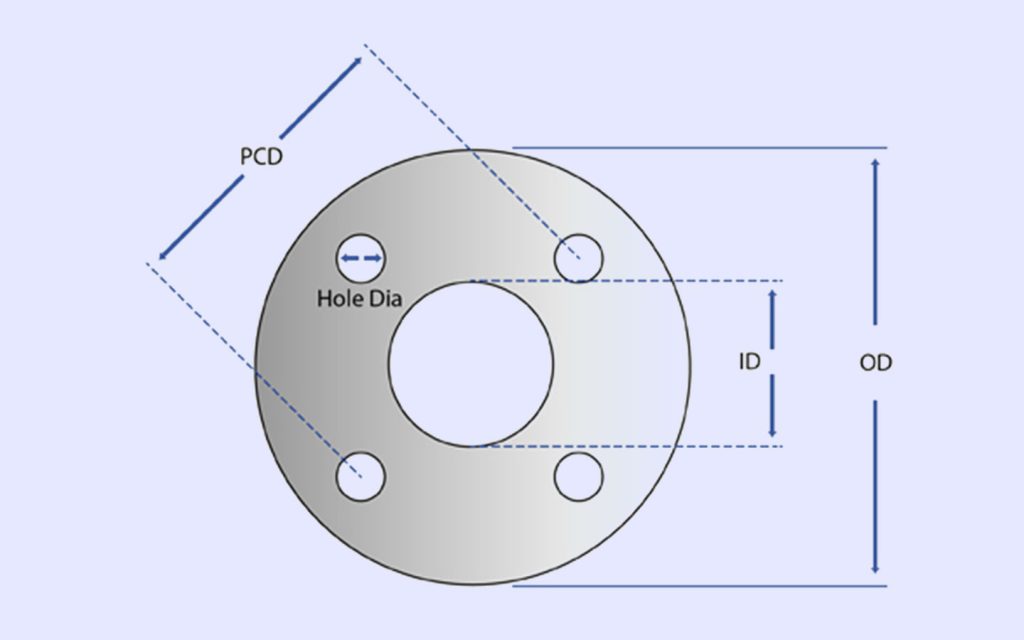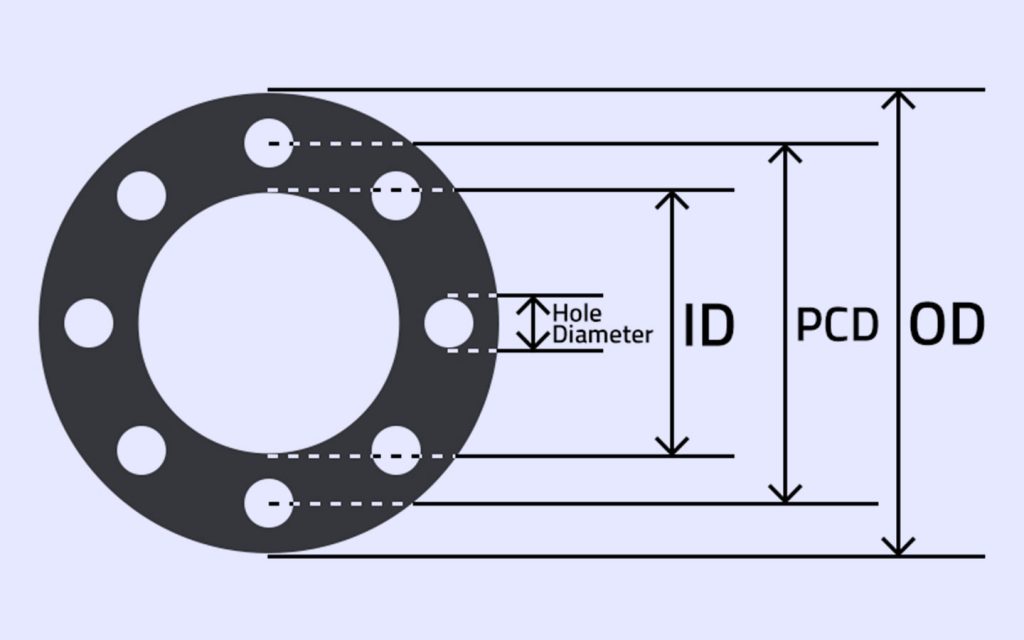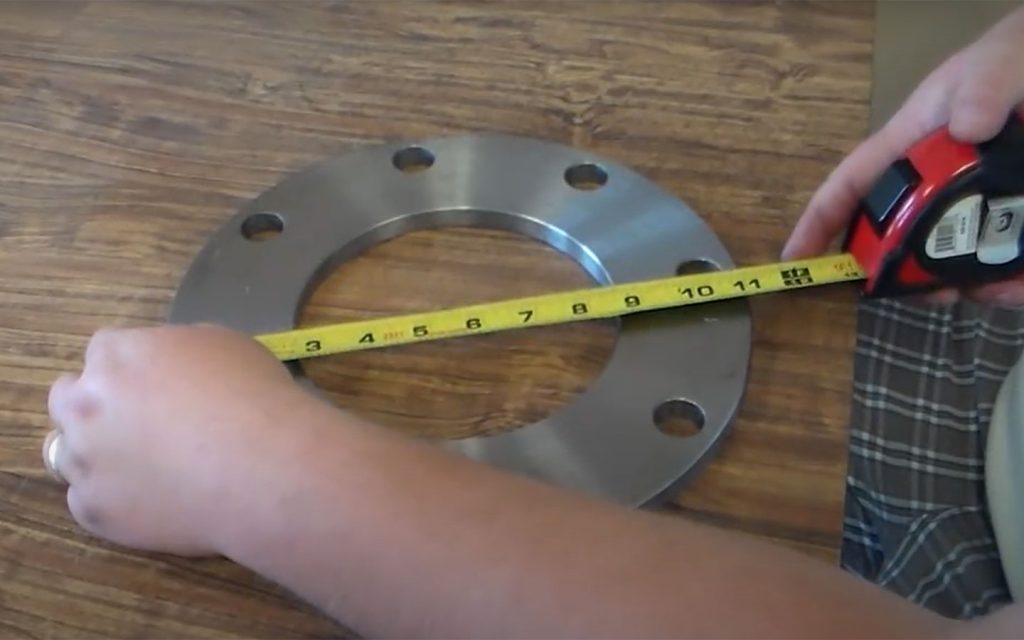PCD IS HEART OF THE FLANGE. IF PCD WILL NOT MATCH ,two different flanges can’t fit properly as bolting holes are carried our on the PCD. so exact match of PCD is required for proper bolting and thus resulting in strong joint.
Flanges are very important in industries when they need to connect valves , pipes with pipework for future maintenance and easy removal. The standard can differ worldwide hence, you need to identify particular suitable according to your area.
The flange table helps one for the identification of particular standards based on various features. It includes nominal pressure, pitch circle diameter (PCD), diameter for the bolts or even raised face interface. The design for the flange adapter has different types. It includes welding, threading and many more. There are many typical connections which help to ensure the tight seal.
The flange adapters are used in different industries. It includes oil and gas, chemical processing, power generation, water and wastewater treatment and more. Flanges offer great versatility and effectiveness with helping to create the secured connections.
Types of Flanges and Their Applications
There are many types of the flanges designed in the market for specific applications. It includes pressure ratings, connection methods and more. Here are some of the common type of flanges mentioned as follows:
Weld neck flanges
Weld neck flanges are attached with pipe along with a long tapered head. The taper neck benefits from use of the weld neck flanges in a high pressure application area. The flange matches with the bore of the pipe to reduce turbulence and erosion of fluid flowing.
Slip on flanges
As the name suggests, flanges slip down the pipe and weld together. These are proven easy to install and align as compared with weld neck flanges. It is because these flanges are less bulky and easy to handle. But it is not applicable to low pressure and temperature areas.
Socket weld flange
Socket weld flanges are designed for the small pipe diameters. The flange is firstly inserted into the pipe and then welded up. It is applicable for the high temperature areas at smaller pipes. Due to this arrangement, socket weld flange doesn’t restrict the flow of fluid like chemical and steam lines etc.
Threaded flange
It is particularly applicable to areas where welding is not feasible. Hence, these are applicable at low pressure areas. Instead of welding there is use of threads inside the flanges which helps to get a secure connection.
Lap joint flanges
Lap joints are used for the connection with stub ends. Pipe is inserted into the flange before welding. It is proven beneficial for the piping system which requires frequent dismantling, inspection, maintenance cleaning and more.
Blind flanges
Blind flanges have unique characteristics for sealing of the piping system for opening. These are used generally for sealing, isolating the pipe for testing flow of gas or liquid.
Ring type joint (RTJ) flanges
This particular type of flanges have the presence of a groove installed with a metal gasket. Tightening of the flanges help in compression into the pipe to create a metal-to-metal seal. It is particularly applicable in high pressure and high temperature conditions.
Measuring Flange PCD
Check out this step-by-step guide for measuring of Pitch Circle Diameter (PCD) in flanges are as follows:
Gather tools
You should gather the tools like ruler, measuring tape, Vernier caliper, pencil, paper etc for noting of flange PCD measures.

Identify flange holes
Look for the bolt holes present on the flange. The holes are arranged around circumference with even spacing.

Count down the holes
Count for the number of holes present on the flange. This number is most required for calculating flange PCD charts.
Measure bolt circle diameter
Select any of the adjacent holes present in the circumference. Try to measure the points and distance with their respective centre points. Try to remain accurate with measurement of distance with one hole to another one.

Calculation of PCD
You need to make a multiplication of distance from centre points of holes with 1.1547. It is recognized as a constant factor for PCD for finding the bolt circle measurement.
Record PCD
Record PCD measurement as per calculation.

Verify it once again
Repeat the steps from 4-6 for making another set for adjacent holes measurement. In overall calculation, the PCD should remain constant. If you find slight differences in points then prefer to take average.
Optional
If precision is important, try to calculate PCD individually for each set of bolts. Following takes the average for all measurements to get accuracy.
Significance of Accurate PCD Measurement
Impact on system integrity and safety
Role in selecting compatible gaskets and bolts
Compliance with industry standards (ASME, DIN, etc.)
Accurate measurement of PCD matters much to maintain integrity and safety of different industries. It includes as follows:
Proper alignment
Proper alignment ensures the correct assembly of flanges with pipe. PCD is important to maintain integrity and safety of the system with prevention of distortion, stress, strain etc. PCD of two flanges ,which we intend to do by bolting must match with each other , otherwise the bolt will not pass through two different PCD flanges.
Leak prevention
Flanges make seals with components of the system. It includes machinery, pressure vessels, pipelines and more. Correct measurement of PCD is essential to get perfect mating of sealing surface, ultimately minimizing risk of leaks. Even a small leak from space can lead to environmental contamination, loss of product, safety hazards and more.
Structural integrity
The area facing high pressure needs to have structural integrity following accurate PCD measurement. Misalignment can lead to improper mating of flanges which result in leaks in the piping system. Also, this condition might not lead to development of structural failure, ruptures and more.
Operational efficiency
Operational efficiency, reduction in friction, wear on components is avoided only when there is proper alignment in the system. Even this factor helps in increasing the lifespan of equipment. Issues like downtime and maintenance costs along with repairs and replacements are made possible.
Safety compliance
Some of the industries follow safety compliance with proper regulations and standards. It includes operation of equipment, design and assembly also. Here PCD measurements play an important role to ensure proper safety compliance. It will indeed reduce the chances of accidents, leaks, injuries, regulatory penalties and more.
Practical Applications and Case Studies
PCD measurements can help industries for connection of different sections of pipe. Accurate measurements are important to maintain integrity of pipeline preventing leaks.
Case study:
Background:
A company is assigned with a task for construction of a pipeline which helps in transportation of oil to refinery sites. This pipeline has to run several miles long. In this journey it has to pass through numerous sections of pipe connected with a flange.
Challenge:
It is important to note down the PCD measurement to ensure the proper safety and efficiency of the operating in the piping system. Any of the misalignment or inaccuracies with PCD measurement leads to weakness, costly delays and more.
Solutions:
Precision measurement
The construction needs utilization of measurement such as calipers, micromeres or even laser measurement and more.
Quality control procedures
Before making complete installations, it is important to check quality which should meet specified dimensions and tolerance. If found any deviation, it could not meet consistency and accuracy for the pipeline.
Alignment checks
During final assembly, the alignment checks are conducted for verification of proper sealing. It will help to reduce the risk of leaks and misalignment.
Testing and inspection
After assembly, pressure ratings, procedures for inspection are carried out to verify integration of the pipeline. It includes hydrostatic tests, visual impacts and more for identification of issues to come up with flange connection.
Outcome:
Prioritizing accuracy of PCD measurement helps a company to meet safety standards and regulatory requirements. After this, the piping system operates efficiently without structural failures, transportation of materials and more.
Frequently Asked Questions
What are the different types of flanges and their specific applications?
There are many different types of the flanges available in the market. It includes weld neck, threaded, socket weld , slip-on, lap joint, ring type joint (RTJ) and more. All of these have particular applications in high temperature and pressure areas.
How does flange PCD affect the selection of gaskets and bolts?
PCD of flanges have proper measurement with respect to the chart which helps in selection of gasket and bolt for accurate alignment.
What are the standard industry measurements and tolerances for flange PCD? (answer is not accurate)
The standard industry measurement includes ANSI B16.5 flanges, ISO (international), DIN(Germany), JIS (Japan) etc. Precise measurement for each of the flanges is different. Therefore, to know the specific tolerance level refer to the specification provided in the manufacturer list.
How can inaccuracies in measuring PCD impact the piping system?
Inaccuracies in measuring PCD can lead to misalignment resulting in leakage in the piping system. First of all wrong PCD flanges will not allow for bolting and hence joint is not possible
Are there tools or techniques that can simplify the measurement of flange PCD?
Yes, use the techniques for proper measurement with ruler, vernier scale and more to get ease of measurement of flange PCD.
Fig: PCD Calculation of a Flange
Sometimes it’s hard to measure the PCD of a butterfly valve or a flange that’s installed in the pipework. Realizing your requirement at a crucial time, we brought some handy tips to find the PCD calculation of flange having different numbers of holes.
As accurately as you can, measure two adjacent holes using a vernier scale and calculate the PCD; then calculate for-
4 holes: multiply by 1.414
8 holes: multiply by 2.613
12 holes: multiply by 3.864
16 holes: multiply by 5.126
Example:
This 150mm flange has 8 holes and measures 90mm.
PCD = 90 x 2.613 = 235mm





